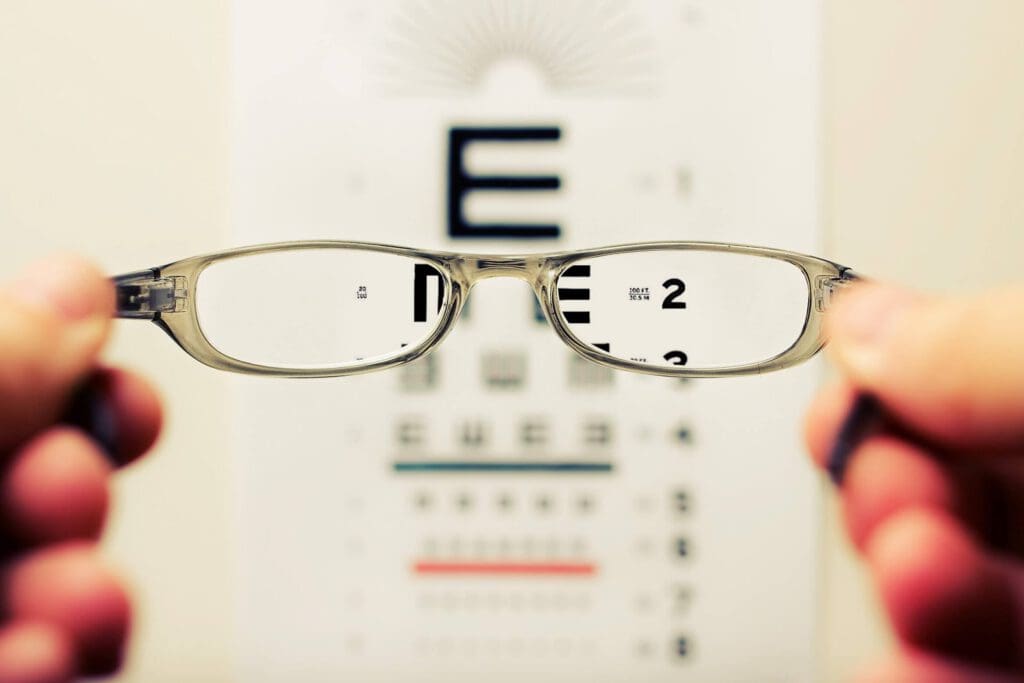Oregon Driving Vision Requirements: Explained
Home / Vision Education Center / Vision & Vision Loss Impacts on Driving /
Last Updated:
To drive in Oregon, you must have a minimum of 20/40 vision in your best eye for unrestricted driving. Similar rules exist for corrected vision, except you need to always wear your corrective eyewear while driving. Some people with worse vision than this can drive, but limitations apply.
Table of Contents
Oregon has a program in place so some drivers who can safely drive with special telescopic lenses have the ability to do so. The rules are stricter though, and you will only be able to drive in the daytime unless a doctor says otherwise.
Vision retesting is rare. It usually only occurs when it comes time to renew your license and you are over 50 years old. This is because vision often deteriorates with age.
In some cases, you may be reported for poor driving, which can result in retesting. A doctor may determine you are unable to drive for a variety of medical reasons, including poor vision.

Oregon Driving Vision Requirements
Like every state, Oregon has laws in place to promote safe driving. A portion of these requirements are designed to ensure you can only get your license if you are able to safely remain aware of what is happening on the road as you drive. There is a focus on vision, but hearing is also addressed.
Oregon’s vision requirements are reasonable in light of nationwide laws. They require that you have 20/70 vision without corrective lenses to get your license without any sort of restrictions. For context, 20/70 vision means that you can clearly see at 20 feet what somebody with 20/20 vision (unimpaired vision) can see from 70 feet away.
You deserve clear vision. We can help.
With 135+ locations and over 2.5 million procedures performed, our board-certified eye surgeons deliver results you can trust.
Your journey to better vision starts here.
If your best corrected visual acuity (BCVA) is between 20/40 and 20/70, you will be able to receive your license, but you may be restricted to driving in daylight unless a licensed vision specialist argues otherwise. For obvious reasons, if you require corrective wear like glasses to achieve 20/70 vision, you will be required to wear this corrective eyewear while driving.
Put simply, if your best eye’s vision can only reach 20/70 visual acuity, you will be able to drive, but your privileges will likely be restricted to daytime driving. This is because that level of vision may not be safe for driving in the dark.
If anything, these requirements are arguably a bit lax. More commonly, 20/40 vision is required in at least one eye to legally drive, with corrective wear being required if needed to achieve that level of vision. Requiring 20/40 vision is viewed by many as a safer option, although Oregon’s field of vision requirement of 110 degrees is on par with recommendations.
Limited Vision Condition Program
Oregon has a special set of rules that can allow those with limited vision to drive. To qualify, you must:
- Have visual acuity in your best eye of no more than 20/80 and no less than 20/200 with the best lens correction.
- Not have a diagnosis or prognosis that may result in your corrected vision getting to be 20/200 or worse.
- Have a visual field of at least 120 degrees horizontally and 80 degrees vertically.
- Potentially benefit from a telescopic lens when driving.
The focus of this provision is to allow some people who could safely drive if they were to use a bioptic telescopic lens to do so. These are basically a special type of glasses that work similarly to a telescope or binoculars. They are usually part of a pair of glasses, and you can also look through your glasses in the more traditional manner.
These glasses allow you to briefly look through their telescopic lenses to get a 3x view of important visual details on the road. Most of your driving is still done by looking through your glasses at regular magnification.
This program has some restrictions. It is limited to daytime driving. You will be unable to drive at night unless approved by a vision specialist to do so.

How Often Will My Vision Be Tested?
You will undergo an initial vision test when you first get your license. After that point, Oregon requires people be retested if they are over 50 years old and renewing their license. Sight tends to deteriorate with age, so this test ensures your eyesight is still suitable for safe driving.
Licenses are renewed every eight years in Oregon. The age you’ll be at the time of this retesting depends on your license renewal date.
If people in your life believe you are a risk to yourself and others on the road, they can report you as an unsafe driver. Once the DMV reviews the report, they may have you retested if they deem it appropriate. This retesting will include a vision test. Although rare, some people have their licenses suspended immediately if they are an obvious and immediate threat.
Certain laws are in place that obligate medical professionals to report you if they believe you are an at-risk driver. These rules cover many conditions, not just vision problems, but serious sight impairment could be one cause for you to be reported. This will generally suspend your driving privileges, although you can appeal if you believe the report was unjust or an error.
It’s important to remember all these rules exist to protect people on the road, including yourself. If you have any reason to believe your vision is bad enough that you fear a vision test, you likely should not be driving. At the very least, you should first talk to an eye doctor.
Driving with serious vision impairment is irresponsible. It could get you or someone else seriously hurt or even killed.
You deserve clear vision. We can help.
With 135+ locations and over 2.5 million procedures performed, our board-certified eye surgeons deliver results you can trust.
Your journey to better vision starts here.
References
- Limited Vision Condition Program. Oregon Driver & Motor Vehicle Services.
- Department of Transportation: Driver and Motor Vehicle Services Division – Chapter 735. Oregon State Archives.
- Driving Restrictions per State. (September 24, 2019). American Academy of Ophthalmology.
- License Renewal & Insurance. Oregon.gov.
- At-Risk Driver Program for Medical Professionals. Oregon Driver & Motor Vehicle Services.
- Reporting an Unsafe Driver. Oregon Driver & Motor Vehicle Services.
- Low Vision and Legal Blindness Terms and Descriptions. American Foundation for the Blind.
- Vision Requirements for Driving Safety. (February 2006). International Council of Ophthalmology.
- Certificate of Vision. Oregon Department of Transportation Driver and Motor Vehicles (DMV).
- Limited Vision Condition Program: Using a Bioptic Telescopic Lens. Oregon Department of Transportation Driver and Motor Vehicles (DMV).
- Driving With Bioptics. Ocutech.
This content is for informational purposes only. It may have been reviewed by a licensed physician, but is not intended to serve as a substitute for professional medical advice. Always consult your healthcare provider with any health concerns. For more, read our Privacy Policy and Editorial Policy.
